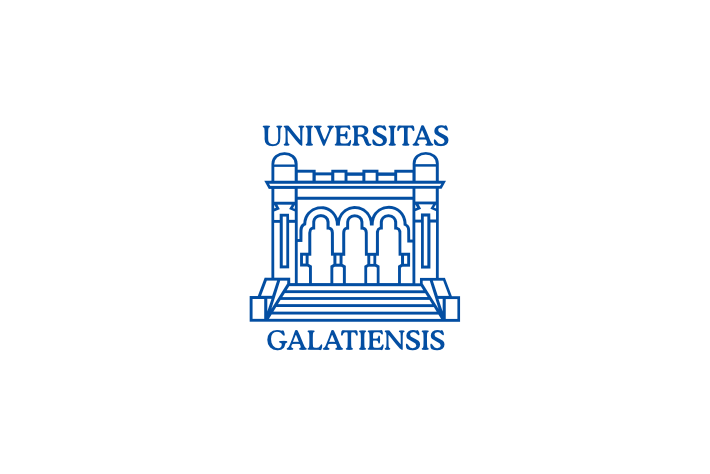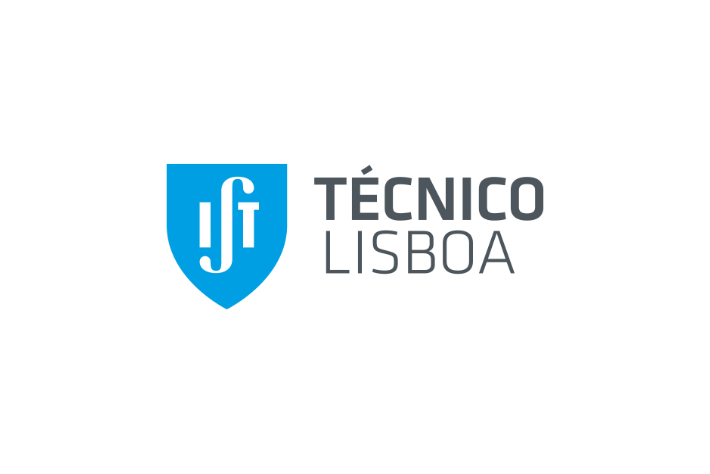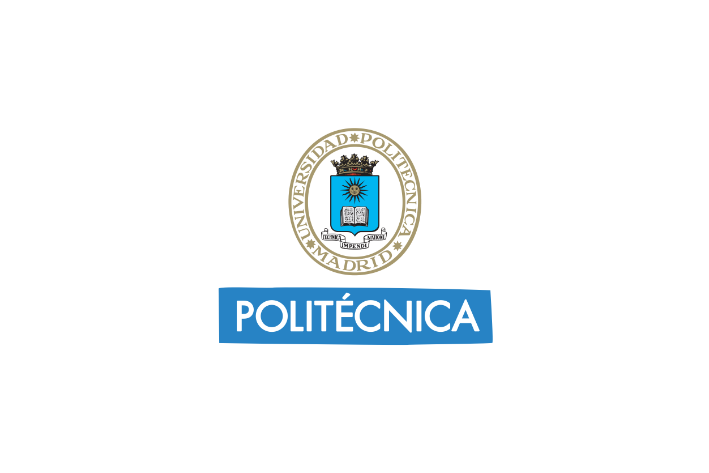Associated Partners
Institut Catholique d’Arts et Métiers – ICAM (France)
ICAM-Nantes is part of ICAM – Institut Catholique d’Arts et Métiers, which is a School of Engineering, having various campuses in France.
ICAM laboratories in Nantes campus have rich experiences in composite manufacturing (draping, resin infusion, RTM, heating, forming, welding) and in development of industrial demonstrators (mechanics, energetic, automation, production). Our areas of research for shipbuilding and offshore industries include the modelling of the dynamic behavior of metallic and composite immerged structures, the instrumentation and measurement of embarked structures dynamic behavior, the modelling of production workflow, the recycling of composite materials used for marine applications and the design and manufacturing of energy production and management systems.
Various projects in relation with the EMSHIP master have been performed:
- Since 2015, ICAM has been involved in the EMSHIP (EMMC), precursor project of the EMSHIP+ M120, funded in the framework of the EMJMD projects selected under the Quality Review call EACEA/2015/09 (EMSHIP: Project 159652 – Grant Agreement 2015-1687). ICAM staff is teaching in the EMSHIP Master of Naval Architecture and Advanced Ship-building Technologies, with advanced lectures in “Composite structures”.
- SHARP Joined Integrated Project: Development of simplified methods to analyse the crashworthiness of ships subjec-ted to collisions (TOTAL, DCNS, BUREAU VERITAS, GDF, PRINCIPIA, ICAM)
- CHARGEOL Regional research project: Development of simplified methods for the analysis of offshore wind turbine jackets when subjected to accidental loads (STX, ECN, HYDROCEAN, IFSTTAR, ICAM)
- SUCCESS “Rapid” DGA project: development of simplified methods for the analyses of immersed composite structu-res subjected to hydrodynamic impacts and underwater explosions (MECA, MULTIPLAST, ICAM)
In the past five years, members of ICAM have published 15+ papers in peer reviewed journals in the field of composite and marine structures.
ICAM is involved in the Advanced Master on “Composite Structures” shared with Ecole Centrale de Nantes, University of Nantes and Ecole des Mines de Nantes.
University of Genova – UNIGE
The University of Genoa (Italy) is a State University founded in 1481. In 1870, the “Naval School” was founded by the Royal Italian Navy, and from which the Faculty of Engineering was developed.
Today the University of Genova includes 5 Schools and 22 Departments, with 2’700 staff members and more than 40’000 students. At present 125 Bachelor degrees and 92 Master degrees into all the most important scientific fields are available. Among them are particularly reputed the bachelor and master degrees in Naval Architecture and Marine Engineering. In 1990 the Faculty of Engineering and the Faculty of Architecture founded the first Italian School for Pleasure Craft Design. In 2012 the Faculty of Engineering and the Faculty of Architecture joined together in the Polytechnic School which manages the two courses on ship and yacht design.
Various projects in relation with the EMSHIP+ master have been performed:
- Since 2010, UNIGE has been involved in the EMSHIP (EMMC), precursor project of the EMSHIP+ M120, funded by the Education, Audiovisual and Culture Executive Agency (project 2010-0142/001) and extended in the framework of the EMJMD projects selected under the Quality Review call EACEA/2015/09 (EMSHIP: Project 159652 – Grant Agreement 2015-1687). UNIGE’s Professors involved in the EMSHIP EMMC are currently offering classes and practical training concerning yacht design.
- EDUCATIONAL and R&D PROJECTS
- EBDIG I: European Boat Design Innovation Group offering a “Yacht Design” Programme. Partners: University of Cov-entry, Delft University of Technology, TUDEV University of Istanbul, University of Genova, Ladida KKG.
- EBDIG II: European Boat Design Innovation Group offering a “Wind Farm Support Vessels” Programme. Partners: Uni-versity of Coventry, Delft University of Technology, Chalmers University, TUDEV University of Istanbul, BMT-Nigel Gee, University of Genova.
- EU-FP6 MARSTRUCT: Network of Excellence on Marine Structures, 33 partners, duration: 7 years.
In the past five years, members of UNIGE have published more than 100 papers in peer reviewed journals in the field of naval architecture, ocean engineering and yacht design.
Solent University - SOLENT
With a strong commitment to learning and teaching, SOLENT University made a £100m investment in its Marine design facilities, and now has a state of the art marine training facility (simulators and model ship lake) for training Merchant Seafarers. Solent University has as part of its portfolio of courses, the world renowned B.Eng(Hons) Yacht & Powercraft Design degree and also a new degree titled MSc in Superyacht Design.
According to the Guardian Newspapers Best University Guide, Solent University’s Engineering department was recently placed 5th out of all UK universities (2021) for delivering best teaching to its undergraduate students.
SOLENT University further benefits from world class facilities for naval architecture, including a newly upgraded hydrodynamic test centre with towing tank, equipped with wave maker and a full composite manufacturing laboratory with materials testing capabilities , a private lake with ship manned models, and a number of high-tech bridge and engine room simulators.
The yacht design degrees at SOLENT University are known to be the best world-wide; and benefit from a strong and prestigious network of alumni, with the designers of the world’s most advanced racing yachts (Guillaume Verdier, Jason Ker, …), and alumni include world-renown superyacht designers (Ed Dubois, Rob Humphreys,…).
With reference to research, relevant Staff at Solent University are also researching into reducing the reliance on Fossil Fuel technology and are involved in Joint European projects such as the Interreg ISHY Implementation of Ship Hybridisation Project.
The international reputation of the course and its staff has also driven a number of international partnerships as well as consultancy and research project, including:
- Design of a human powered hydrofoil craft to beat the world’s speed record
- Design of a 45m/500gt superyacht for Hawk Yachts
- Development of a low carbon/electric solution for the tour boat market.
- Design of a hydrofoiling zero-emission Trimaran for the fast ferry market.
Since 2015, Solent University has been an associated partner of the EMship program, participating in events such the management committee and EMship week, and provides a short course about Sailing yacht design and and small powercraft design, for boats typically under 24 metres in length. Solent University staff have supported approximately 2 students for their final year project per year.
Being part of the EMship consortium of universities and SAB partners has led to both industrial partnerships and joint research and subsequent publications written with other partner organisations.
Osaka University - OU
Osaka University (OU) is one of the oldest universities in Japan founded in 1931, although its original traces back to KAITOKUDO founded in 1724 by request of citizens and merchants in Osaka(1724) and TEKIJUKU founded in 1838 as a private medical school. It has 16,000 students in 11 undergraduate schools and 2,100 in 13 graduate schools. There are about 1,400 foreign students from all over the world.
Department of Naval Architecture and Ocean Engineering (NAOE, OU) is one of the oldest departments in School of Engineering (founded in 1896) founded in 1800 and one of the leading universities which deal with naval architecture, ship technology or ocean engineering in Japan. Its undergraduated course is accredited by JABEE(Japan Acreditation Boad for Engineering Education), a member of Washington Accord in 2008. Over 100 years education, the graduates are distributed widely in the major shipbuilding companies or other relevant companies. For master course it established English Course in 2005 in graduate school where master and doctor continuous education is conducted with Japanese Government scholarship for foreign students. From 2007 all classes except Alliance (to be explained later) classes for master course are proviede in English.
It has also established International Maritime Policy Special Programme (educational course) for master course in 2006. It encourages master students to be world leaders in maritime policy or management serving for IMO, Japanese Government or other relevant organizations. Therefore master course education is already quite international and it was quite attractive for foreign students who cannot understand Japanese. Kansai Maritime Alliance Education Programme is established in 2008 for master course. Kansai is the district name near by Osaka, which includes Kyoto, Nara, Kobe etc. In 2007 Osaka University(Graduate School of Engineering), Kobe University (Graduate School of Maritime Science) and Osaka Prefectural University (Graduate School of Engineering) have agreed to organize the above programme which is commonly available for these three universities. This is an attempt to share education between three universities, and it was realized, because classes are held at Nakanoshima Center of (downtown classroom/lecture room) of OU which is almost equal distance from three universities.
For research activities NAOE, OU has totally about 20 staffs including 7 professors. Research area is widely spread from hydrodynamics, ship resistance and propulsion, seakeeping and ocean waves, ship stability and manoeuvrability, structure and strength, welding and fatigue necessary for ship/offshore structure design and underwater robotics and ocean environment. All NAOE Professors are internationally reputated and serve as IMO deligates, International Journal editors and other acaedmic societies/committees’ members.
University of Michigan - UM-NAME
The Department of Naval Architecture and Marine Engineering in the of Engineering at the University of Michigan is unique in the United State today in its focus, quality, and scope. The department is the only department in the nation with a significant presence in undergraduate and graduate education/research through the Ph.D. degree in naval architecture and marine engineering. The department has been a leading source of degrees in Naval Architecture and Marine Engineering for more than 100 years.
In addition to traditional naval architecture and marine engineering, instruction is offered in offshore engineering, coastal engineering, and marine environmental engineering. Recent graduates are active in design and research related to offshore oil and gas exploration and production platforms. Others are involved in overcoming water-borne pollution transport in the Great Lakes and the oceans, and coastal erosion predictions, as well as the design of traditional ships, submersibles, high-speed vessels and recreational craft. A number of our alumni have leading roles in the design of America’s Cup racing yachts.
Graduate students have the opportunity to select one of the following specializations:
- Marine Environmental Engineering: Renewable Ocean Energy Specialization, Marine Environmental Engineering Specialization
- Marine Systems Design: Marine Autonomous Vehicles; Marine Design Analysis; Marine Engineering Specialization; Marine Production Specialization; Marine Structures Specialization; Marine Systems Management Specialization; Offshore Engineering Specialization
- Marine Mechanics: Controls; Hydrodynamics; Structures; Coastal Processes
- The Marine Mechanics area emphasizes the fundamental mechanics associated with engineering in the marine environment. This includes classic naval architecture motivated issues in dynamics, hydrodynamics, and solid mechanics as well as environmental processes not necessarily associated with ships, offshore platforms, or underwater systems.
- The Marine Systems Design area emphasizes the more applied engineering aspects of the field including ship, small craft, and offshore platform and systems design, analysis, production, and operations as well as the professional education provided by the M.Eng. (Concurrent Marine Design) degree program. Most of the faculty undertake activities that place them in several of the concentration areas at various times.
University of New South Wales - UNSW
UNSW will commemorate 60 years of extraordinary achievement in 2009. A range of events throughout the year will pay tribute to the past and present accomplishments of staff and students. Details of these events will be posted on the UNSW Events Calendar throughout the year.
UNSW is renowned for the quality of its graduates and its commitment to new and creative approaches to education and research. Its motto – Scientia Manu et Mente (“Knowledge by Hand and Mind”) – encapsulates the University’s central philosophy of balancing the practical and the scholarly. UNSW is a founding member of the prestigious Group of Eight research intensive universities in Australia and a member of the Universitas 21 international consortium.
Established in 1949, UNSW has expanded rapidly and now has close to 40,000 students, including more than 7000 international students from over 130 different countries. The University offers more than 300 undergraduate and 600 postgraduate programs, and has developed an extensive network of alumni chapters throughout Asia.
The naval architecture degree program at UNSW had its first graduate in 1963 and, since then, has graduated 318 bachelor degrees, 5 master degrees and 7 doctor degrees.
The current undergraduate program at UNSW provides a four-year degree in naval architecture, with special emphasis in the final year on two areas in which Australia is doing well, those of yachts and high-speed craft.
UNSW, together with the Royal Institution of Naval Architects and the Institution of Marine Engineers, organised a series of two-yearly maritime conferences in the last three decades of the twentieth century. These conferences morphed into the current series of two-yearly Pacific International Maritime Conferences which commenced in 2000. The two-yearly International Conference on Fast Sea Transportation was held at UNSW in 1997.
Federal University of Rio de Janeiro - UFRJ
The Federal University of Rio de Janeiro (Portuguese: Universidade Federal do Rio de Janeiro, UFRJ) is a public university in the state of Rio de Janeiro, Brazil. UFRJ is the largest federal university in the country. In terms of scientific, artistic and cultural productions it is recognized nationally and internationally. In 2015 QS World University Rankings ranked UFRJ as the best Brazilian federal university, as well as the third best university in the country occupying the ninth position among institutions of Latin America.
UFRJ has operated continuously since 1792, when the Royal Academy of Artillery, Fortification and Design, precursor to the university’s current Polytechnic School was founded and served as basis for the country’s college system since its officialization in 1920. Besides its 157 undergraduate and 580 postgraduate courses, the UFRJ is responsible for seven museums, most notably the National Museum, nine hospitals, hundreds of laboratories and research facilities and forty-three libraries. Its history and identity are closely tied to the Brazilian ambitions of forging a modern, competitive and just society. Today, UFRJ has 3821 academic staff, 55787 undergraduate students and 11542 postgraduate students.
The Ocean Engineering Program of UFRJ is composed actually by ~35 Professors, ~400 undergraduate students, ~170 MSC students and ~100 DSC students. The main concentrations areas are: Structures, Subsea Technology, Hydrodynamics, Maritime Transportation and Logistics, Marine Engineering and Coastal & Oceanographic Engineering. Some of the leading edges laboratories of the university are belonging to the Ocean Engineering department such as the Ocean Tank LabOceano, the Waves and Currents Laboratory, the Ocean Structures Nucleus, and the Subsea Technology Laboratory amongst others. The Ocean Engineering Program of UFRJ has been classified in 40th world position in the Shanghai Ranking’s 2017 for Marine/Ocean Engineering.
Istanbul Technical University - ITU
Istanbul Technical University was founded in 1773 with the name of “Imperial School of Naval Engineering”. Istanbul Technical University is one of the world’s oldest technical universities with a long history of 250 years. ITU is a reputable institution known for its history, science, technology, art and sport achievements over the period of 242 years. It is a research centre connecting the past to the present and designing projects for the future. ITU, that has presented numerous scientific and technological developments, was the first to introduce novelties and unique achievements, provides academic learning being one of the oldest and most prominent technical universities in the world.
ITU offers 39 graduate programs at 13 faculties, 39 postgraduate and doctoral programs at 6 institutes on five different campuses, all of them located in the heart of Istanbul.
ITU has 360 laboratories and 13 research centers. With 23 engineering programs accredited by ABET Accreditation, ITU is the world’s leader among universities. Students participating in International Exchange Graduate Programs complete a part of their education at one of the partner universities in the USA and receive a dual diploma. ITU offers a number of double major programs and is the top university in Turkey providing a broad range of Erasmus exchange programs with more than 900 international agreements.
ITU is the cradle of science, industry and technology conducting over 200 R&D projects in the scope of ARI Teknokent. In cooperation with the entrepreneurship ecosystem ITU Seed, the university provides support to students-entrepreneurs.
Turkey’s fırst communication satellite, first electric minibus, first hydrogen-powered boat, first driverless car, first national computer were launched by ITU. The first television broadcast in Turkey was made from ITU, the first university radio station was opened in ITU.
Long history, intelligent minds and outstanding academic environment of ITU form a strong bridge connecting the past to the future. With the priority for continuous development, innovative perspective and strong international contacts ITU proves to be the university of the past, present and future.
University of Sciences and Technology of Oran Mohamed Boudiaf – USTO-MB
The department has been created in 1982 within the University of Sciences and Technology of Oran and in the year 1999 it became a department. It is the only department in the region (North Africa).
The different options for Licenses and Masters within the department are:
- Licenses: Computer Aided Ship Design, Computing and Naval Hydrodynamics, Computing, Propulsion Systems and Auxiliary Machineries
- Masters : Ship and Marine Structures Construction, Naval Propulsion System Management
- Post-graduation: The department has also the following postgraduate studies: Numerical simulation of fluid flows, Modelling of pollutant dispersion, Computational for Fluid Energy and Engineering, Composite material and Marine Structure, Mechanical behaviour of composite structures.
In 1982 the department started with 25 students and the number has jumped to 545 students in 2009 supervised by 34 lecturers.
University of Alexandria - AASMT
The Arab Academy for Science, Technology and Maritime Transport (AASTMT) is one of the leading educational establish-ments in the Middle East, Since 1972, as one of the Arab League affiliations and it has always had a leading role providing the latest technology with the most up-to-date educational facilities and resources to ensure that our teaching and re-search is always in the lead. Currently, the College of Engineering and Technology (established in 1990) offers Bachelor’s, Master’s and PhD degrees in the areas of architectural engineering and environmental design, computer engineering, con-struction and buildings engineering, electrical and control engineering, electronics and communications engineering, indus-trial and management engineering, marine engineering, and mechanical engineering.
All programs offered by the College are acknowledged by the Supreme Council of Egyptian Universities (SCU) and fully ac-credited from the British Professional Institutes (IMechE), (IMarEST), (IET), (ICE), (IStructE), and (IHT), beside the accredita-tion from the Royal Institute of British Architects (RIBA) parts 1 and 2 for the architectural engineering program. Also all college programs, except Architecture & Environmental Design, obtained the “ABET” accreditation since 2016.
The department of Marine Engineering was established in 1991 and offers education to:
- Masters: Marine Engineering, Offshore Engineering, Ocean Engineering
- Post-graduation: Experimental design of ship hull structure, Numerical simulation of fluid flows, Modelling of pollutant dispersion, Computational for Fluid Energy and Engineering, Composite material and Marine Structure
WEGEMT
WEGEMT Foundation – EUROPEAN ASSOCIATION OF UNIVERSITIES IN MARINE TECHNOLOGY AND RELATED SCIENCES
WEGEMT is a not-for-profit European Association of 18 Universities in 16 countries. It was formed in 1978 with the aim of increasing the knowledge base, and updating and extending the skills and competence of practicing engineers and postgraduate students working at an advanced level in marine technology and related sciences. At present, the Associates are drawn from universities in Europe, including Scandinavia, the former Eastern Europe and the CIS. They have in common, a capability, expertise and experience to teach and carry out research in marine technology and related sciences and an active interest in collectively delivering initiatives that support marine industries.
An Executive Committee that consists of 13 elected representatives governs the Association. Presently the Chairman of the Association is Professor Hotze Boonstra of the University of Delft. Day-to-day running of the WEGEMT activities is carried out through its Secretariat based at The Royal Institution of Naval Architects in London.
WEGEMT activities include supporting, encouraging and participating in programmes of Research and Development (R&D), Education and Training (E&T), and Information Exchange and Dissemination where it relates to the maritime industries sector. Recently WEGEMT has been carrying out a study on the RTD capabilities of European Universities involved in the marine science and technology field to assess how well this capability has been harnessed within Europe.








